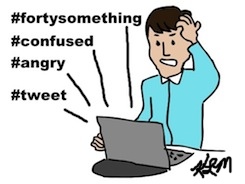 If you are going to be working as a nanny in a home with pets, it’s important that you are able to instruct the children on how to interact with pets properly. Playful behaviors that often seem natural or harmless to children can sometimes end up injuring the pet, or worse, the child. As such, it is advisable to have some basic guidelines and wisdom that you can use to ensure that the children who are in your care behave smartly around animals. Here are a few tips to remember:
If you are going to be working as a nanny in a home with pets, it’s important that you are able to instruct the children on how to interact with pets properly. Playful behaviors that often seem natural or harmless to children can sometimes end up injuring the pet, or worse, the child. As such, it is advisable to have some basic guidelines and wisdom that you can use to ensure that the children who are in your care behave smartly around animals. Here are a few tips to remember:
Know What Is Age Appropriate
It’s important to understand how much you can reasonably expect to teach young children and to what extent they are likely to listen to you. If you are caring for pets that are somewhat fragile — like a bird or a gerbil — or somewhat dangerous – like an untrained and aggressive dog – it may not be enough to simply give young children the proper instructions and demonstrations for handling the pet. The child’s and animal’s well-being are key, and if you fear that the child’s or pet’s safety may be in danger, you should keep the kids away from the pet until they’re old enough to have a safe hands-on experience.
Teach a Gentle Hand
As an adult in a position of authority, it is your job to impart the proper ways to handle and touch animals to the children in your care. Your actions should serve as an example to them, and as such, you should go out of your way to demonstrate soft, gentle and well-calculated handling techniques. Whether you are dealing with a fragile parakeet or a sturdy Rottweiler, you should teach the children what is and is not appropriate. Fully explain the possible negative outcomes so that they understand just what can happen when you hit or assault a pet (it gets hurt, the child is hurt in return, everybody cries).
Teach a Calm Demeanor
Teaching children to be calm around pets is particularly important if there’s a possibility that the animal could lash out and injure someone. A calm disposition is essential around dogs. Children should be discouraged from making loud noises, jumping around or making erratic movements. You may want to discuss the way that human behaviors can make animals feel with the children in your care. (E.g., what seems fun and joyful to a child can feel threatening or confusing to a dog.) If you can convey that frantic actions and loud noises not only frighten their pet, but also make the animal more likely to become violent, this should help to keep their behavior in check.
Teach Children to Look For The Right Signs
Being able to read animal body language and other indicators is essential for avoiding situations in which an animal attacks or lashes out. Make sure that the children in your care understand what certain animal behaviors typically indicate. For instance, it’s all too easy for a child to hear a dog growling and mistakenly think that the sound is an indication of happiness, like a cat’s purr. Similarly, a young child could see a cat waving its tail and think the animal is happy rather than annoyed or in a state of aggression. (Differences between dogs and cats always make for good lessons.) Making sure that children are aware of each type of animal’s specific indicators will greatly reduce the likelihood of an undesirable incident, such as a bite or scratch.
Teach Children How to Interact With New Animals
If you’re out around town with the kids, chances are good you’re going to come across people walking their dogs. To cut down on risky incidents, it’s important to teach the children in your care how to interact with new animals. Children will often assume that the same type of behavior and familiarity that they engage in with their pet at home is appropriate for strange animals. The Animal League of America recommends that you always ask the owner before allowing children to approach an animal. Even so, you will want to explain to the kids that they should be especially gentle and respectful when meeting new animals. It’s also recommended that you specifically instruct children to avoid touching the eyes, ears, nose and mouth of unfamiliar animals.
By maintaining constant supervision and instructing children to care for pets in the right ways, you stand to minimize the incidence of harm to the children and pets. More than that, though, you will teach them valuable life skills that should help them to better navigate future interactions with animals and become responsible pet owners down the line.
 For those of us fortysomethings out there, we may just really be starting to leverage Twitter and one of the things that I know I have struggled with is the proper use of some of the abbreviations and Twitter slang. In order to provide myself with a quick reminder and to hopefully help others out, I prepared a quick list. If you know of anything that I missed that could help more people (including me), please add them via the comment section below.
For those of us fortysomethings out there, we may just really be starting to leverage Twitter and one of the things that I know I have struggled with is the proper use of some of the abbreviations and Twitter slang. In order to provide myself with a quick reminder and to hopefully help others out, I prepared a quick list. If you know of anything that I missed that could help more people (including me), please add them via the comment section below. In the Twitterverse, it’s all about how many followers you have. Some of the most successful people on Twitter use humor as a way to keep their followers engaged. However, before you start thinking you’re going to become the next famous Twitter comedian, you should know that it’s not as easy as it sounds. With only 140 characters or less to work with, you need to keep your tweets short and succinct, while leaving enough room for the punch-line. These 10 Kens have mastered the art, so make sure to check them out for your daily does of Twitter comedy gold.
In the Twitterverse, it’s all about how many followers you have. Some of the most successful people on Twitter use humor as a way to keep their followers engaged. However, before you start thinking you’re going to become the next famous Twitter comedian, you should know that it’s not as easy as it sounds. With only 140 characters or less to work with, you need to keep your tweets short and succinct, while leaving enough room for the punch-line. These 10 Kens have mastered the art, so make sure to check them out for your daily does of Twitter comedy gold. Because all you really need is a good pair of running shoes and a road, running is the preferred cardio choice for many. Not only does it strengthen your heart, but it also torches calories, aids in weight loss and, according to webMD.com, a regular running routine can help fight heart disease. Running also releases endorphins, which can help combat depression. Many people swear by running as a stress reliever, and use the time spent pounding the pavement to work out problems and think things through. The benefits you get from running are impressive, and these 27 blog posts will help you get started on a running regimen or improve what you are already doing.
Because all you really need is a good pair of running shoes and a road, running is the preferred cardio choice for many. Not only does it strengthen your heart, but it also torches calories, aids in weight loss and, according to webMD.com, a regular running routine can help fight heart disease. Running also releases endorphins, which can help combat depression. Many people swear by running as a stress reliever, and use the time spent pounding the pavement to work out problems and think things through. The benefits you get from running are impressive, and these 27 blog posts will help you get started on a running regimen or improve what you are already doing. From remembering where you put your keys to keeping a mental note of your grocery list without leaving an item out, it’s not always easy to remember the details of everyday life in such a hectic, fast-paced world. Some people tend to be more forgetful than others, though, potentially causing stress and anxiety when important tasks and items fall to the wayside. These seven pointers can help you remember details, both important and trivial, and get out of the stressful loop that is forgetfulness.
From remembering where you put your keys to keeping a mental note of your grocery list without leaving an item out, it’s not always easy to remember the details of everyday life in such a hectic, fast-paced world. Some people tend to be more forgetful than others, though, potentially causing stress and anxiety when important tasks and items fall to the wayside. These seven pointers can help you remember details, both important and trivial, and get out of the stressful loop that is forgetfulness. First things first: Mary Poppins sets a pretty high bar. Whether you’re talking about the Disney musical from 1964 or the series of books that ran from the 1930s to the 1980s, she’s pretty much the gold standard for a magical childcare character. The movie alone has helped raise several generations; is there anybody who doesn’t know the tune to “A Spoonful of Sugar”?
First things first: Mary Poppins sets a pretty high bar. Whether you’re talking about the Disney musical from 1964 or the series of books that ran from the 1930s to the 1980s, she’s pretty much the gold standard for a magical childcare character. The movie alone has helped raise several generations; is there anybody who doesn’t know the tune to “A Spoonful of Sugar”?